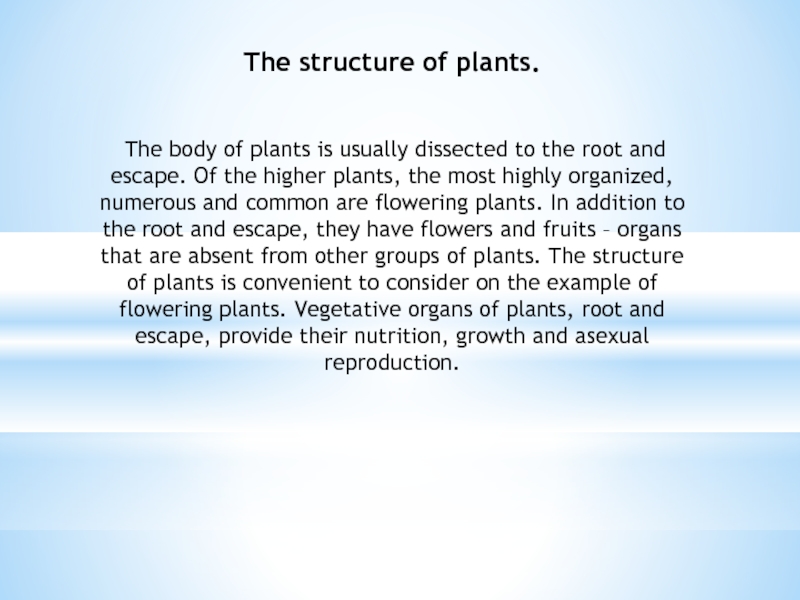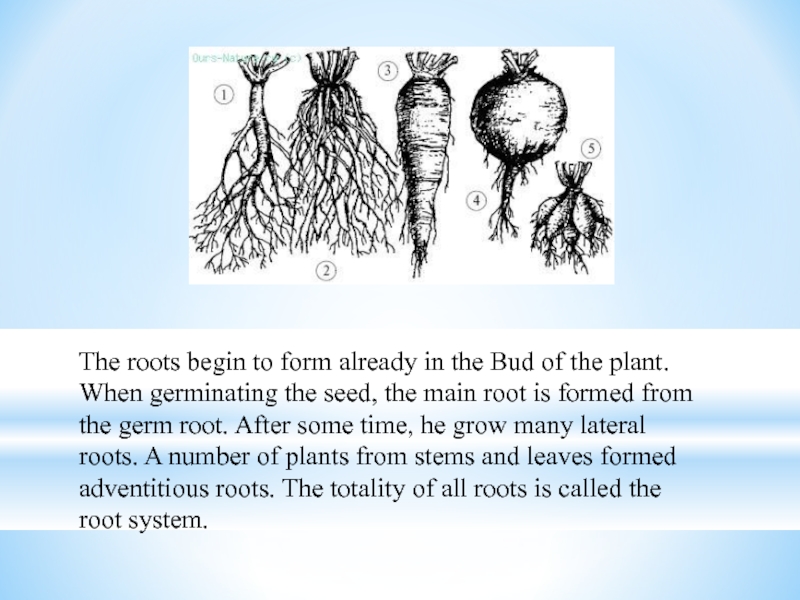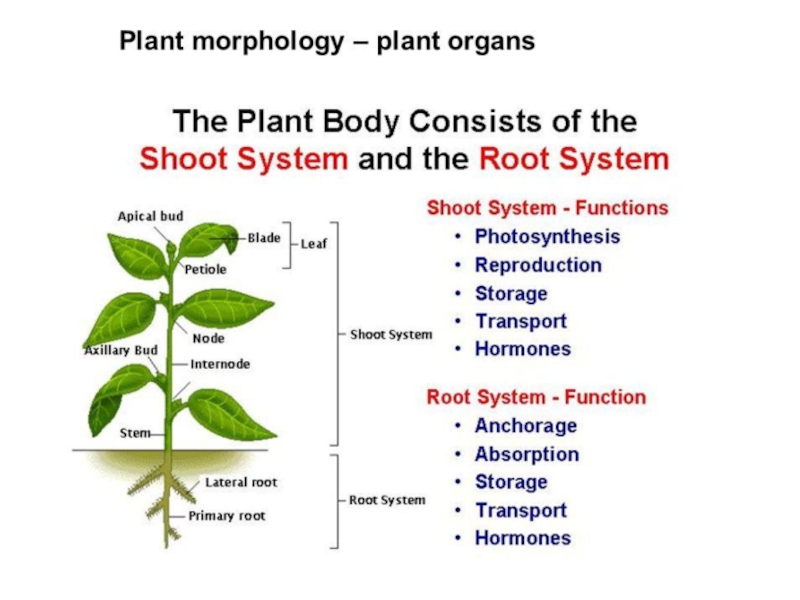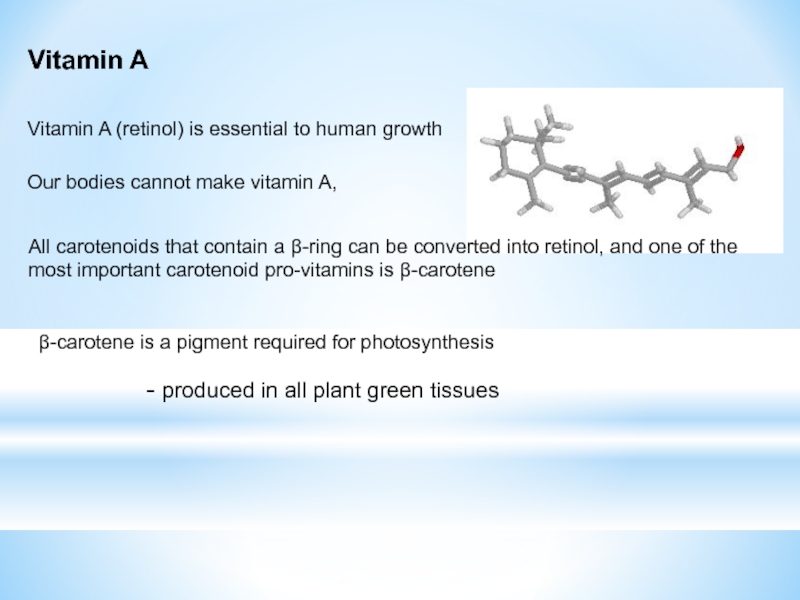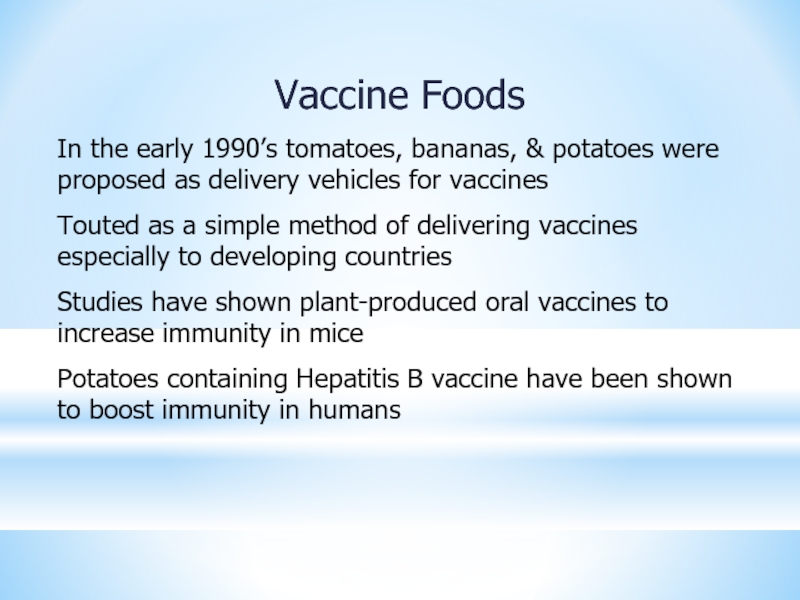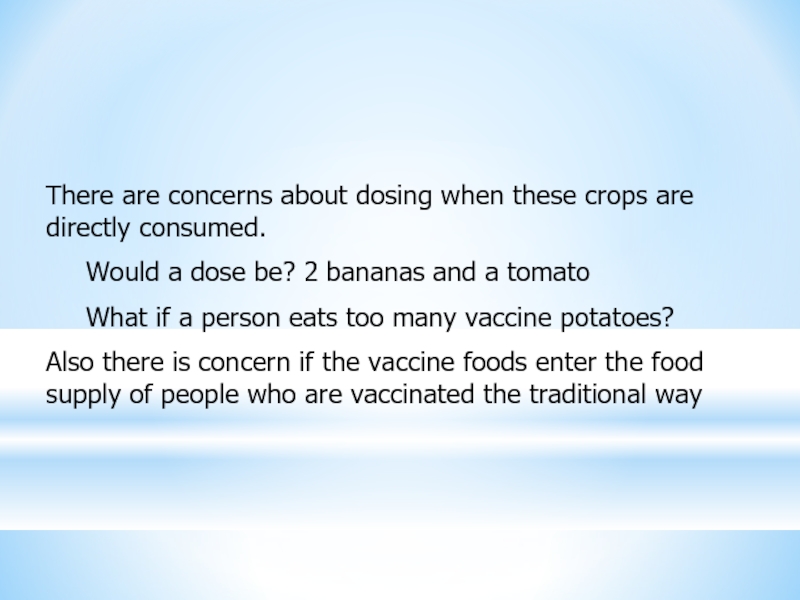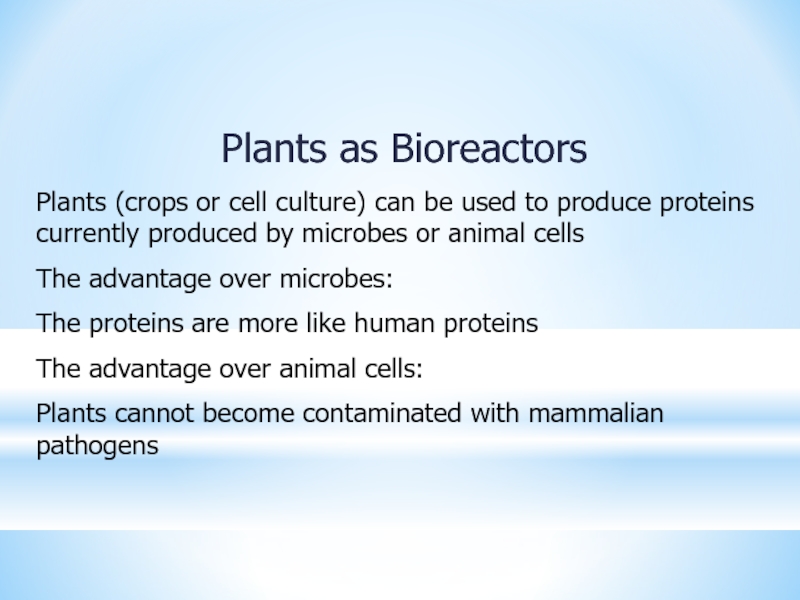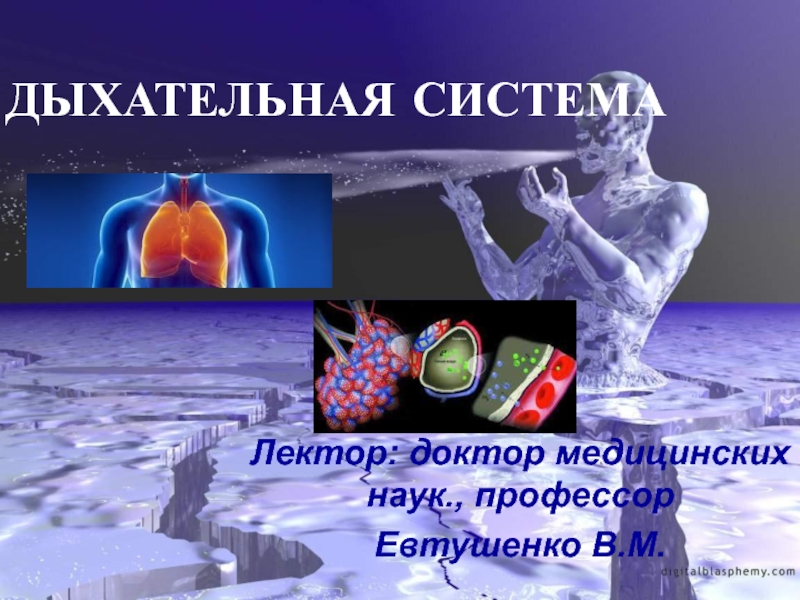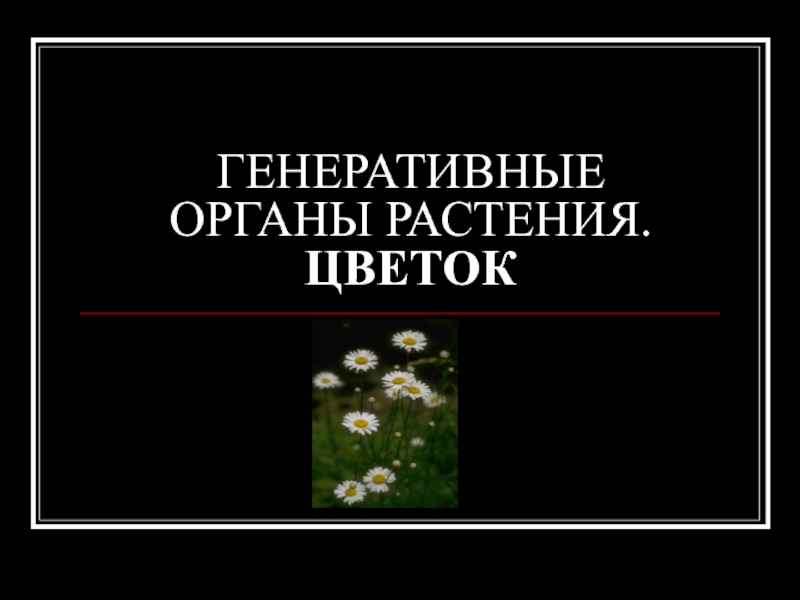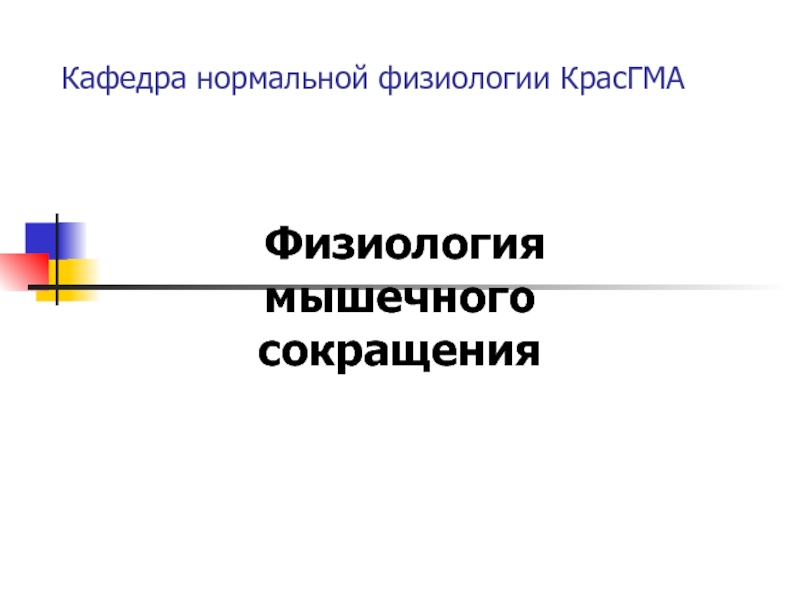- Главная
- Разное
- Дизайн
- Бизнес и предпринимательство
- Аналитика
- Образование
- Развлечения
- Красота и здоровье
- Финансы
- Государство
- Путешествия
- Спорт
- Недвижимость
- Армия
- Графика
- Культурология
- Еда и кулинария
- Лингвистика
- Английский язык
- Астрономия
- Алгебра
- Биология
- География
- Детские презентации
- Информатика
- История
- Литература
- Маркетинг
- Математика
- Медицина
- Менеджмент
- Музыка
- МХК
- Немецкий язык
- ОБЖ
- Обществознание
- Окружающий мир
- Педагогика
- Русский язык
- Технология
- Физика
- Философия
- Химия
- Шаблоны, картинки для презентаций
- Экология
- Экономика
- Юриспруденция
Plants. Plant Tissue Culture презентация
Содержание
- 1. Plants. Plant Tissue Culture
- 2. Plants are called photosynthetic organisms belonging to
- 3. The structure of plants.
- 4. The roots begin to form already in
- 5. Escape is a complex vegetative organ consisting
- 7. Stem-is the axial part of the escape,
- 8. Plant Tissue Culture Plant cells differ from
- 9. Vitamin A Vitamin A (retinol) is
- 10. 400 million people are at risk of
- 11. Vaccine Foods In the early 1990’s tomatoes,
- 12. There are concerns about dosing when these
- 13. Plants as Bioreactors Plants (crops or cell
Слайд 2Plants are called photosynthetic organisms belonging to the eukaryotes. They have
Слайд 3The structure of plants. The body of plants is usually dissected
Слайд 4The roots begin to form already in the Bud of the
Слайд 5Escape is a complex vegetative organ consisting of buds, stems and
Слайд 7Stem-is the axial part of the escape, which are the leaves
Слайд 8Plant Tissue Culture
Plant cells differ from animals cells in that they
A totipotent cell is one that can develop into specialized cell types & regenerate an entire organism
Tissue culture of plants and the regeneration of complete plants from cells has been done since 1930s
This allows large-scale clonal propagation of plants
Слайд 9Vitamin A
Vitamin A (retinol) is essential to human growth
Our bodies
All carotenoids that contain a β-ring can be converted into retinol, and one of the most important carotenoid pro-vitamins is β-carotene
β-carotene is a pigment required for photosynthesis
- produced in all plant green tissues
Слайд 10400 million people are at risk of vitamin A deficiency (VAD),
implicated in up to 2.5 million deaths annually in children under 5
0.5 million children go blind each year
because of VAD
Supplementation programmes have reduced child mortality by up to 50% in target areas
supplementation not universal; expensive; misses remote areas
VAD makes children especially vulnerable to infections
Vitamin A deficiency
VAD is most serious in regions where rice is the staple food ; up to 70% children under 5 affected
Слайд 11Vaccine Foods
In the early 1990’s tomatoes, bananas, & potatoes were proposed
Touted as a simple method of delivering vaccines especially to developing countries
Studies have shown plant-produced oral vaccines to increase immunity in mice
Potatoes containing Hepatitis B vaccine have been shown to boost immunity in humans
Слайд 12There are concerns about dosing when these crops are directly consumed.
Would a dose be? 2 bananas and a tomato
What if a person eats too many vaccine potatoes?
Also there is concern if the vaccine foods enter the food supply of people who are vaccinated the traditional way
Слайд 13Plants as Bioreactors
Plants (crops or cell culture) can be used to
The advantage over microbes:
The proteins are more like human proteins
The advantage over animal cells:
Plants cannot become contaminated with mammalian pathogens


